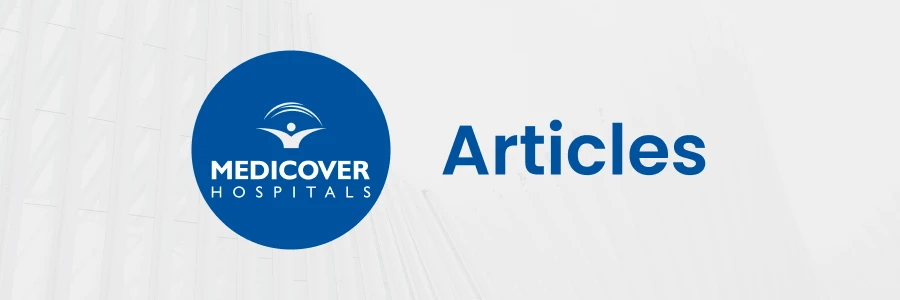
7 Signs Of Heart Disease That Appear On The Skin
Millions of people worldwide are affected by heart disease, which is a serious condition that can be life-threatening. While heart disease is commonly associated with symptoms like chest pain and shortness of breath, it may also manifest in surprising ways on the skin. In this blog, we will explore seven skin-related signs that could be indicative of underlying heart issues. Remember, if you experience any of these signs, It is crucial to seek advice from a healthcare specialist to receive accurate evaluation and diagnosis.
1. Yellowish Skin (Xanthelasma):
Xanthelasma appears as small, yellowish, fatty deposits on the skin, commonly around the eyes or on the eyelids. Deposits like these may serve as a warning sign of high cholesterol levels, which is a significant risk factor for heart disease. If you notice xanthelasma, it's crucial to get your cholesterol levels checked and adopt heart-healthy lifestyle changes.
2. Blue or Purple Skin (Cyanosis):
Cyanosis is a condition where the skin, lips, or nail beds appear bluish or purplish due to insufficient oxygen in the blood. It can indicate poor circulation or a reduced amount of oxygenated blood reaching the tissues. Cyanosis may be a sign of a serious heart or lung condition and requires immediate medical attention.
3. Swollen Legs and Ankles (Edema):
Edema, characterized by swollen legs and ankles, can occur when the heart is not pumping blood effectively. Heart failure could lead to fluid accumulation in the lower extremities, causing edema. If you experience persistent swelling in your legs or ankles and it could be a sign of underlying heart disease.
4. Red Spots or Lines (Petechiae and Splinter Hemorrhages):
Petechiae are tiny red or purple spots on the skin, and splinter hemorrhages appear as thin, reddish-brown lines under the nails. These skin changes can be associated with certain heart conditions, such as infective endocarditis, which is an infection of the heart valves. If you notice these skin abnormalities, seek medical attention promptly.
Secure your health with a second opinion. Make informed decisions and book your appointment today!
Get A Second Opinion5. Painful Skin Nodules (Osler's Nodes):
Osler's nodes are painful, raised nodules that can develop on the fingers, toes, or the palms of the hands. They are another potential sign of infective endocarditis, which is an infection that affects the inner lining of the heart chambers and valves. If you experience these painful nodules, it's crucial to undergo a thorough medical evaluation.
6. Persistent Rash (Livedo Reticularis):
Livedo reticularis is a skin condition characterized by a lacy as well as net-like rash that appears on the skin. It occurs due to changes in blood vessels and can be associated with underlying cardiovascular issues. While livedo reticularis can also be benign, It is crucial to get it evaluated by a medical expert.
7. Cold, Pale, or Shiny Skin (Peripheral Artery Disease):
Peripheral artery disease (PAD) is a condition that affects blood flow to the extremities. It can cause the skin on the legs, feet, and hands to become cold, pale, and shiny. PAD is often associated with atherosclerosis, a buildup of plaque in the arteries, and is a significant risk factor for heart disease.
Conclusion:
The skin can sometimes provide valuable clues about our overall health, including signs of heart disease. If you notice any of these skin-related signs, don't ignore them. Detecting a problem early on and intervening in a timely manner can have a significant impact. managing heart disease and reducing its impact on your health. Remember, these skin signs are not always definitive indicators of heart problems, but they serve as essential reminders to prioritize heart health and seek professional medical advice for any concerns. Adopting a heart-healthy lifestyle, including regular exercise, a balanced diet, not smoking, and managing stress, can go a long way in promoting cardiovascular wellness and overall well-being.
Ready to take control of your health journey? Book your appointment now and start your path towards wellness today!
Book an AppointmentFrequently Asked Questions
No, these skin signs can be associated with other conditions as well. It's essential to consult a healthcare professional for a proper evaluation and diagnosis.
Not necessarily. These signs can be indicators of heart issues, but they may also have other causes. It's essential to get a comprehensive medical assessment for an accurate diagnosis.
In some cases, lifestyle changes like adopting a heart-healthy diet, regular exercise, and quitting smoking can positively impact cardiovascular health and may improve these skin signs.
Xanthelasma, or yellowish deposits around the eyes, can indicate high cholesterol levels, which are a significant risk factor for heart disease.
Cyanosis, characterized by bluish or purplish skin, can indicate a lack of oxygen in the blood. It requires immediate medical attention as it may be associated with serious heart or lung conditions.
The reversibility of these skin signs depends on the underlying cause and how promptly the associated heart condition is diagnosed and managed.
Infective endocarditis is an infection of the inner lining of the heart chambers and valves. Skin signs like petechiae, splinter hemorrhages, and Osler's nodes can be associated with this condition.
PAD can restrict blood flow to the extremities, and it is often associated with atherosclerosis, a buildup of plaque in the arteries. Atherosclerosis is a significant risk factor for heart disease.
If you notice any unusual skin changes or signs, especially if they are persistent or worrisome, seek medical advice promptly. Your healthcare provider can conduct the necessary evaluations and recommend appropriate tests for a comprehensive diagnosis.